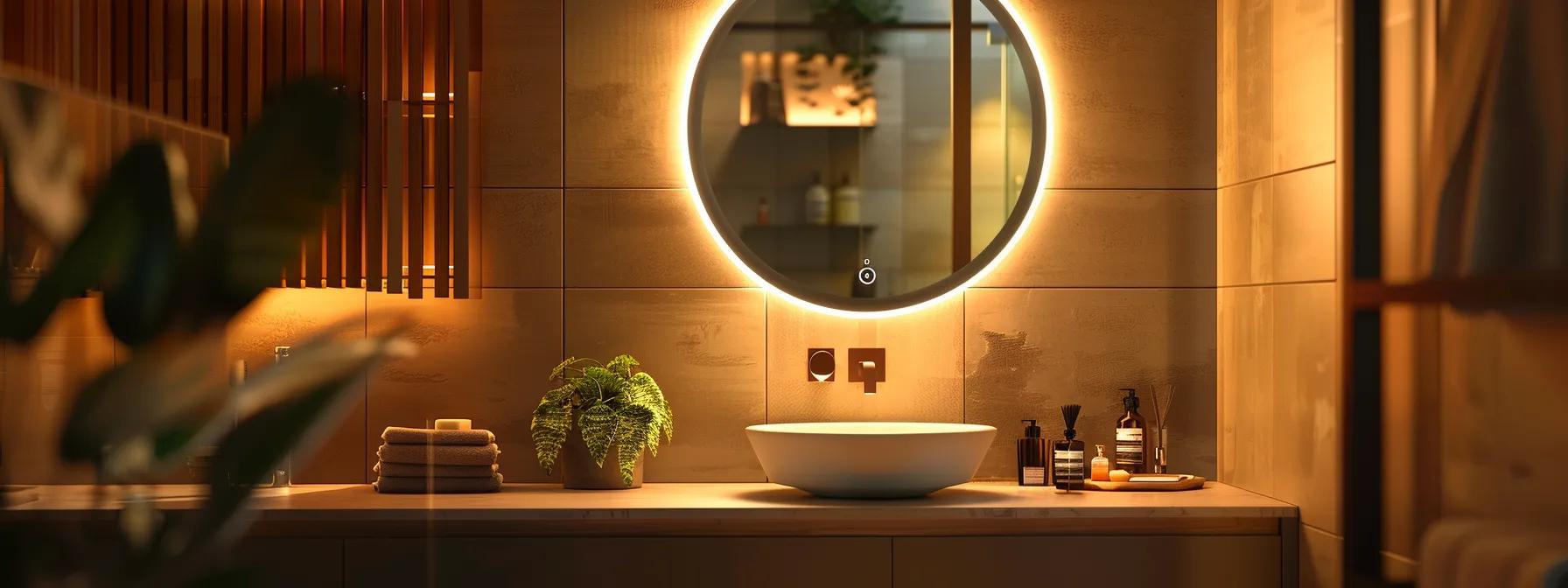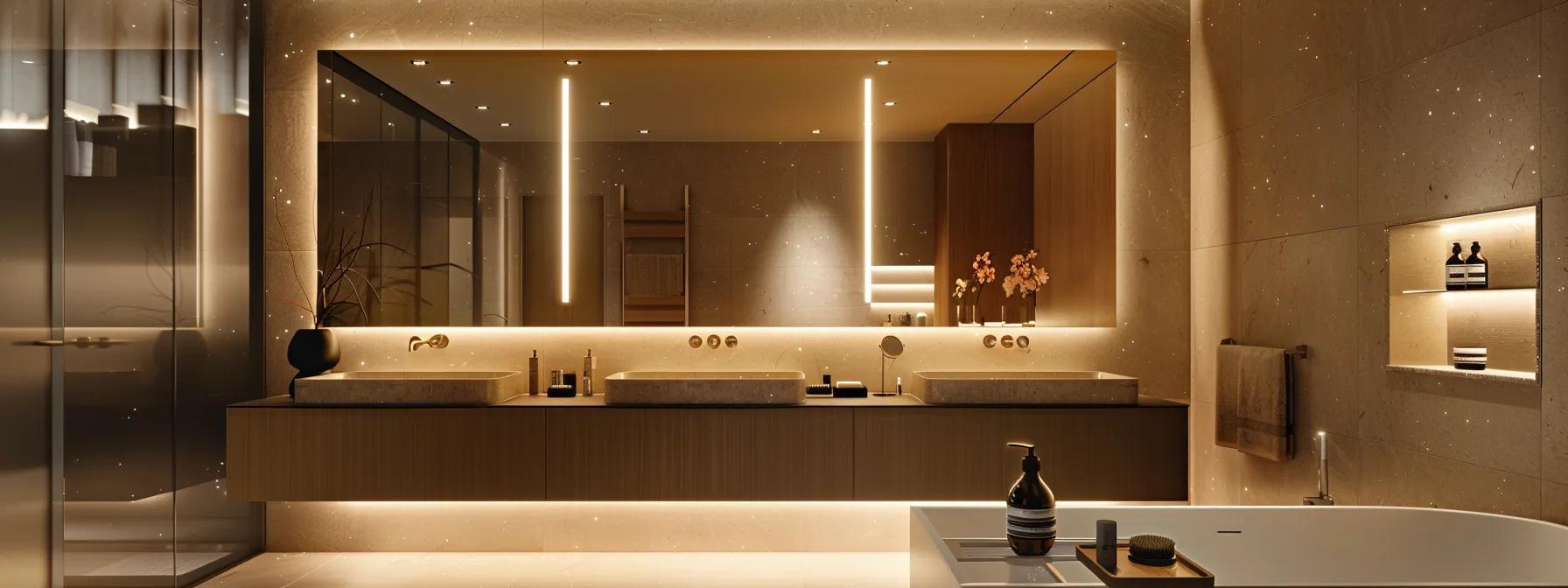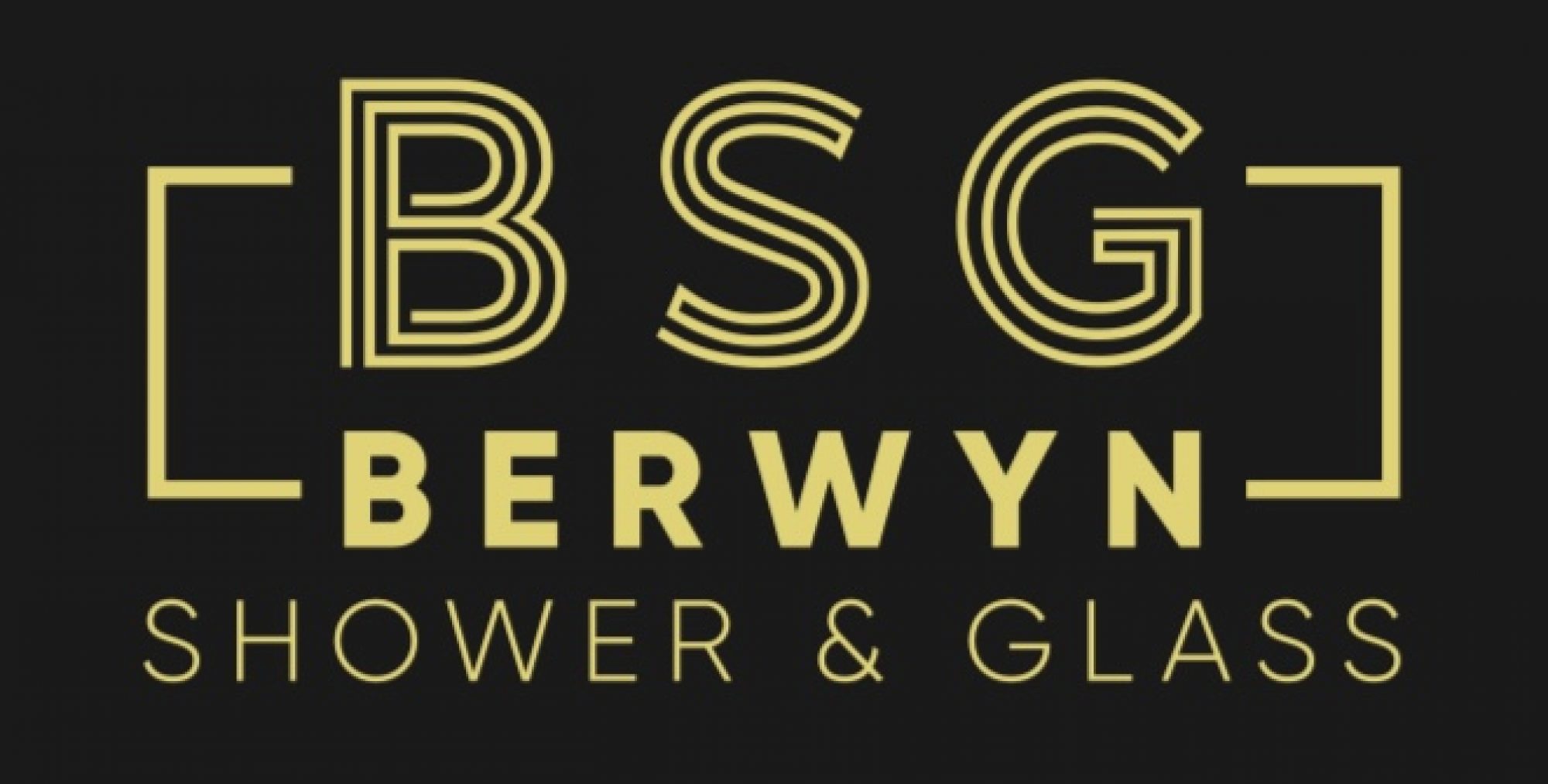Bathroom Mirrors Demystified: How to Choose the Right Bathroom Mirror for Your Spac
In designing a bathroom, selecting the optimal mirror is both a functional and aesthetic decision that can transform the space. Homeowners and interior designers face the challenge of choosing among various mirror types, sizes, and features to meet both design and practical needs such as lighting, reflection clarity, and maintenance. This guide offers expert advice on the key considerations for choosing a bathroom mirror—from LED and smart options to traditional framed and frameless designs—and explains how mirror dimensions, shapes, and advanced features like defogging, magnification, and integrated lighting can enhance both design and functionality. Backed by decades of experience from a family-owned glass shop in the Greater Philadelphia area, this article addresses the most common questions regarding types, features, installation, and maintenance of bathroom mirrors.
Key Takeaways – Choosing the Perfect Bathroom Mirror
- Match mirror type to need: LED-smart for tech and lighting, frameless for sleek minimalism, framed for decorative punch, magnifying for detailed grooming.
- Get the size & shape right: Keep width ≈ vanity width, hang at eye level; rectangles/squares suit modern lines, ovals/rounds soften edges, customs fill awkward niches.
- Select durable materials: High-grade glass with anti-fog, rust-proof metal frames, or moisture-sealed wood for warmth—each demands different upkeep.
- Prioritize key features: Adjustable LED brightness, built-in defoggers, Bluetooth audio, and 5-10× magnification all boost daily usability.
- Install safely: Use moisture-resistant hardware, reinforce walls, and consider pros for heavy or tech-rich mirrors to ensure perfect alignment and wiring.
- Style in harmony: Echo faucet and lighting finishes, balance reflective surfaces with tile/vanity textures for a cohesive look.
- Think long-term: Energy-saving LEDs, easy-clean coatings, and warranties from trusted brands protect your investment and simplify maintenance.
What Are the Different Types of Bathroom Mirrors?
Bathroom mirrors are available in several forms, each serving particular style and practical requirements. Common categories include LED and smart mirrors, traditional framed and frameless designs, and magnifying or vanity mirrors. The choice depends on the bathroom’s overall design, the desired ambiance, and functional needs.
What Features Define LED and Smart Bathroom Mirrors?
LED and smart mirrors go beyond a simple reflective surface by integrating energy-efficient LED lighting with adjustable brightness and color temperature. These features enhance visibility for grooming and makeup applications while creating a uniform, inviting ambiance. Many smart mirrors also include touch controls, Bluetooth connectivity, onboard speakers, and automatic defog functions—eliminating the need for chemical sprays and ensuring clarity after hot showers.
How Do Framed and Frameless Mirrors Compare?
Framed mirrors add a decorative element to the bathroom. They often feature artistic frames crafted from wood, metal, or other materials that create a distinct focal point. In contrast, frameless mirrors provide a sleek, modern look by emphasizing the reflective surface and creating a seamless transition with the wall. This minimalistic design is particularly popular in Scandinavian-style bathrooms where clean lines and open spaces are valued. Both choices are available in different shapes and sizes to suit various placements around sinks, showers, or vanities.
When Should You Choose Magnifying or Vanity Mirrors?
Magnifying or vanity mirrors are designed for close-up tasks such as makeup application, shaving, or detailed grooming. These mirrors offer additional magnification to reveal finer details, often paired with adjustable angles, built-in LED lighting, and anti-glare features. For anyone who prioritizes precise personal grooming, these mirrors reduce eye strain and help achieve accurate results even in low ambient lighting.
How Do You Select the Right Size and Shape for Your Bathroom Mirror?

The size and shape of a bathroom mirror are critical for both functionality and design appeal. A mirror should be proportionate to the space, enhancing light and creating an illusion of a larger room without overwhelming other features. Homeowners should measure the available wall space and select a mirror that balances with existing elements like sinks, vanities, and lighting fixtures. The mirror’s shape—whether square, rectangular, oval, or custom-designed—should complement the bathroom’s overall interior design.
What Mirror Sizes Work Best for Small, Medium, and Large Bathrooms?
In small bathrooms, compact mirrors that remain in proportion to the vanity are ideal. In medium-sized bathrooms, a mirror that offers sufficient coverage without dominating the space works best. In larger bathrooms, oversized or custom-shaped mirrors can serve as statement pieces while reflecting more light and enhancing openness.
Which Mirror Shapes Complement Different Bathroom Styles?
Different shapes evoke different design sensibilities. Rectangular and square mirrors suit modern, minimalistic designs with their clean lines and symmetry. Oval mirrors bring softness and elegance to traditional or transitional bathrooms. Round mirrors can soften angular fixtures and promote an organic feel, while custom shapes offer a unique, artistic statement for eclectic or vintage decors. Matching the mirror shape with the bathroom’s overall style creates a harmonious, attractive environment.
Can Custom Bathroom Mirrors Enhance Your Design?
Custom mirrors provide the flexibility to fit unusual spaces and incorporate integrated features such as etched designs, built-in lighting, or anti-fog coatings. By tailoring dimensions, materials (including metal, wood, or high-grade glass), and finishes, custom mirrors can seamlessly blend with a homeowner’s vision, offering both striking visual appeal and practical benefits.
What Are the Popular Bathroom Mirror Styles and Materials?
Bathroom mirror styles have evolved from classic designs to modern iterations, each with its distinct benefits. Popular styles now range from modern and minimalist to traditional and rustic. The choice of material—typically high-quality glass, metal, or wood—not only impacts aesthetics but also determines durability, maintenance needs, and compatibility with humid environments.
How Do Modern, Traditional, and Rustic Styles Differ?
Modern mirrors typically feature frameless or slim metal frames with clean lines and a minimalist look. Traditional mirrors may have ornate frames or antique finishes that evoke timeless elegance, while rustic mirrors use raw materials like reclaimed wood or distressed metal to create a warm, natural atmosphere. Each style reflects distinct design values and should harmonize with the bathroom’s overall decor.
What Materials Are Best for Bathroom Mirrors: Glass, Metal, or Wood?
High-quality glass is the most common choice for its clear reflections and durability; many glass mirrors also have anti-fog or scratch-resistant coatings. Metal frames—made of brass, stainless steel, or similar alloys—offer a modern aesthetic along with structural support. Wood frames, when properly sealed against moisture, introduce natural texture and warmth. The selection should consider local humidity, the bathroom’s design style, and maintenance preferences.
How Do Mirror Materials Affect Longevity and Maintenance?
The durability and upkeep of a mirror depend largely on its materials. Glass mirrors with protective coatings require minimal maintenance, while metal frames may need occasional treatment to prevent corrosion in high-humidity settings. Wood frames might require periodic refinishing to protect against moisture damage. Regular cleaning with non-abrasive cloths helps maintain clarity and prolongs the mirror’s life.
Which Features Should You Look for in a Bathroom Mirror?

A bathroom mirror is not just for reflections—it serves as a multi-functional piece that enhances lighting, improves daily routines, and adds style to the room. Key features to consider include LED lighting, defogging mechanisms, smart connectivity (such as Bluetooth), and magnification for detailed tasks. These features can streamline grooming routines while blending seamlessly into the bathroom’s overall design.
How Does LED Lighting Improve Bathroom Mirror Functionality?
LED lighting offers adjustable brightness and warmth, allowing users to tailor the light for various grooming tasks. By providing uniform, energy-efficient illumination without harsh shadows, LED mirrors facilitate activities such as makeup application and shaving. Their long-lasting design and low power consumption also make them both economical and eco-friendly, while modern integrations have made them a popular upgrade over traditional bulbs.
What Are the Advantages of Defogging and Bluetooth-Enabled Mirrors?
Defogging mirrors, which use heating elements or anti-fog coatings, keep reflections clear even after steamy showers, enhancing safety and usability. Bluetooth-enabled mirrors add smart features that allow for audio streaming, firmware updates, or voice commands, reducing the need for additional devices. These technological enhancements contribute to a streamlined, clutter-free bathroom experience.
Why Is Magnification Important for Makeup and Grooming Mirrors?
For detailed grooming tasks, magnification is essential. Mirrors with built-in magnification enable users to see finer details, whether applying makeup, styling hair, or shaping facial hair. This close-up view reduces the chance of errors and supports a more comfortable, precise grooming process. Ergonomically designed with adjustable angles and enhanced lighting, magnifying mirrors are a must-have in personal care routines.
How Do You Properly Install and Maintain Bathroom Mirrors?
Correct installation and regular maintenance are key to preserving a mirror’s functionality and appearance. Whether installing a mirror as a DIY project or hiring professionals, careful attention to the wall type, proper mounting hardware, and placement relative to water sources is essential. Regular cleaning and upkeep further ensure that the mirror remains clear and attractive over time.
What Are the Best Practices for Bathroom Mirror Installation?
For safe and durable installation, use mounting hardware that is resistant to moisture and corrosion. It is important to prepare the wall—reinforcing drywall or using appropriate backer boards if necessary—and to install the mirror at an ergonomic height that complements other elements such as sinks and lighting. Accurate measurements and the use of a level are critical for a centered, balanced installation. In cases of heavy or technologically advanced mirrors, professional installation is recommended to ensure safety and correct alignment.
How Can You Clean and Care for Different Types of Bathroom Mirrors?
Routine cleaning is vital to maintain the mirror’s clarity. Use soft, non-abrasive cloths with mild, pH-balanced cleaners to avoid damaging any protective coatings. Glass mirrors with anti-fog treatments should not be exposed to harsh chemicals, while metal frames benefit from gentle polishing to remove fingerprints and water spots. Wooden frames may require occasional dusting and treatment with a wood-safe polish to maintain their finish. A weekly cleaning routine helps prevent buildup from grime and moisture.
When Should You Consider Professional Installation Services?
Professional help is advised when installing unusually large, heavy, or technologically advanced mirrors. Certified technicians are better equipped to handle complex wall structures, electrical integrations, or advanced features like defogging systems. Professional installation often includes a service guarantee, which minimizes risks and ensures that the mirror is mounted correctly and securely.
What Are the Top Bathroom Mirror Brands and Where to Buy Them?

The reputation of a bathroom mirror brand can influence product quality, design, and installation support. Trusted brands are known for high-quality craftsmanship, innovative features, and comprehensive warranties. Whether shopping online or in physical stores, consumers should consider customer reviews, available warranties, and after-sales support when selecting a mirror.
Which Brands Offer the Best Quality and Variety?
Leading brands such as Berwyn Glass are celebrated for offering a broad range of styles—from minimalist frameless designs to smart mirrors with LED lighting and defog technology. Top brands emphasize eco-friendly materials and energy efficiency. They back their products with robust warranties and clear maintenance guidelines, ensuring that consumers receive reliable, long-lasting products that exceed industry standards.
How to Choose Between Online and in-Store Bathroom Mirror Shopping?
The decision to shop online versus in-store depends on the need for customization and the desire to physically inspect the product. In-store shopping allows customers to assess the scale, texture, and finish of a mirror firsthand. Online shopping, however, may offer a wider variety of options and competitive pricing, along with detailed product descriptions and customer reviews. Many reputable brands also offer virtual consultations to help replicate the in-store experience, ensuring that consumers make informed choices.
How Do Bathroom Mirrors Impact Overall Bathroom Design and Functionality?
Bathroom mirrors play a pivotal role in both design and functionality. They not only provide a reflective surface for daily grooming but also enhance the spatial dynamics of a bathroom. Mirrors can amplify natural light, help balance lighting from various sources, and create an illusion of a larger, more open area. Additionally, the design and frame of a mirror can complement other fixtures, resulting in a coherent and visually appealing interior.
How Can Mirrors Enhance Bathroom Lighting and Space Perception?
By reflecting natural and artificial light, mirrors can brighten a room and make a small or dim bathroom appear significantly larger. Strategic placement—often opposite to windows or light fixtures such as recessed lights or sconces—maximizes this effect. The reflective qualities of the mirror contribute to an overall ambiance that is both welcoming and modern, enhancing both functionality and aesthetic appeal.
What Are the Latest Trends in Bathroom Mirror Design?
Recent trends in mirror design focus on integrating smart technology with simple, minimalist aesthetics. Modern bathroom mirrors increasingly feature touch controls, customizable LED lighting, defogging functions, and even voice activation. Custom shapes—such as octagon or organic geometric patterns—are gaining popularity, reflecting a broader movement toward multifunctional designs that combine visual appeal with practical functionality.
How to Match Bathroom Mirrors With Other Bathroom Fixtures?
A cohesive bathroom design is achieved by matching the mirror with other fixtures. For example, a mirror featuring a brass frame can enhance faucets, towel bars, and light fixtures of similar hues. In contrast, frameless mirrors offer versatility by seamlessly blending with a variety of contemporary or traditional designs. Designers suggest balancing reflective surfaces with complementary textures and finishes found on vanities, cabinets, and even tile work to create a unified interior design.
Frequently Asked Questions
Q: What factors should I consider when choosing a bathroom mirror?
A: Consider the mirror’s size, shape, and style relative to your space. Key features include LED lighting, smart connectivity, defog capabilities, and magnification. Also, evaluate durability and maintenance requirements based on the mirror’s materials.
Q: Are LED and smart mirrors energy efficient?
A: Yes, they typically use low-power LED lighting that delivers adjustable brightness while consuming minimal energy. Their smart features also enhance energy efficiency through customization.
Q: How do I properly install a frameless mirror in a humid bathroom?
A: Use corrosion-resistant mounting hardware and ensure the wall is properly reinforced. Position the mirror at an ergonomic height and follow manufacturer guidelines or hire professionals, especially for larger or high-tech models.
Q: Can a magnifying mirror help with detailed grooming tasks?
A: Absolutely. Magnifying mirrors provide a close-up view critical for tasks such as makeup application, shaving, and hair styling by enlarging the reflected image without sacrificing clarity.
Q: How do I ensure my bathroom mirror stays clear and fog-free?
A: Choose models with built-in defogging technologies. Regular cleaning with a non-abrasive cloth and mild cleaning agents, along with proper ventilation, will help maintain clarity.
Q: What are the benefits of custom bathroom mirrors over standard designs?
A: Custom mirrors offer tailored dimensions, unique shapes, and integrated functionalities that standard models may lack. They ensure a perfect fit and allow for customization in material and finish to better reflect your personal style and technical needs.
Q: Where can I purchase high-quality bathroom mirrors with advanced features?
A: High-quality mirrors, particularly those with LED lighting and smart connectivity, are available from reputable brands online and in retail stores. Look for warranties, customer reviews, and professional installation support when making your choice.
Final Thoughts
This guide has explored the nuanced world of bathroom mirrors, providing insights into selecting a mirror that balances style with practicality. From LED and smart functionalities to comparisons between framed, frameless, and magnifying options, each section offers essential information to enhance both the aesthetics and functionality of your bathroom. By considering factors such as size, shape, material, and advanced features like defogging and magnification, homeowners and designers can create a cohesive, visually striking, and efficient bathroom environment. With informed choices, consumers can invest confidently in bathroom mirrors that not only elevate the beauty of their spaces but also improve everyday routines.

